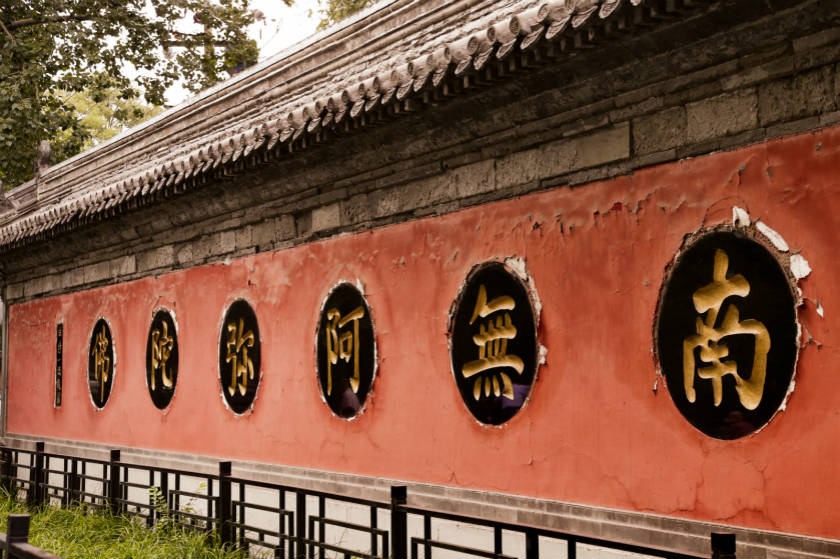Chinese Name: 法源寺 Pronunciation: fă yuán sì
Building Time: 645
Best Visiting Season: All Seasons
Admission Ticket Fare: 5 yuan
Suggested Visiting Hours: 1-2 Hours
Occupied Area: About 6,700 square meters
Address: No. 7 of Qianjie, Xicheng District, Beijing
Opening Hours: 8:30-16:00(Please note that, Fayuan Temple is closed every Wednesday.)
Popular Activities: Vegetarian food is offered for free of charge and visitors worship Buddha on the 1st and 15th day respectively of each lunar month.
Building Function: Originally built to mourn soldiers who died in battle and now it is a place to burn incense and worship Buddha, learn buddhist culture and visit.
Constructed in 645 under the throne of Emperor Taizong (626-649) of the Tang Dynasty (618-907), the Fayuan Temple, with a span of more than 1,300 years, served as the place to mourn the dead soldiers who sacrificed for the country. Occupying an area of 6,700 square meters, it is now the oldest Buddhist temple in Beijing and also one of the temples where the most and rarest Buddhist sutras are stored.
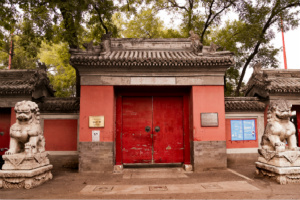
Additionally, being the time-honored ancient temple complex in Beijing, it boasts a large scale, an orderly structure, and an asymmetrical middle axis layout. There are three statues ranking top for the wonderful as well as beautifully-carved skills.
All the buildings in the temple were built during the Ming and Qing Dynasties (1368-1912). The temple sits in the north and faces south, taking on an irregular rectangle shape. It is about 240 meters long from north to south and 75 meters wide on average from east to west. Divided into six courtyards, the main buildings in this temple concentrate on the north-south central axis.
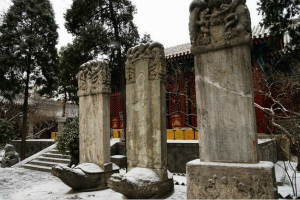
In the temple, it is necessary to mention the lilacs that fill the courtyard. Every April, the lilacs in the courtyard bloom like purple mist in the warm spring, together with the tall, ancient locust tree in the temple. The orchid grass contains the buds in the stone basin in the corner, and the animals run freely and leisurely under the lilacs tree, and all of this without a doubt presents a fictitious land of a peaceful scene. Each autumn, rows of ginkgo trees in front of the temple that stand on both sides of the road are so attractive that plenty of people come here by its fame, in particular the gold-like ginkgo leaves. The enabling environment of ease makes it more appealing to the old.
The Buddhist Academy of China, together with the Buddhist Library and Museum of China, is located here, making it be the very place for Buddhist culture learning. Also, the quiet, peaceful, and comfortable environment attracts visitors to relax and enjoy themselves every year.
The temple was identified as an important temple of Buddhism in the Han-nationality area by the State Council in 1983. Then, on June 25, 2001, the temple, as an ancient building of the Qing Dynasty, was approved by the State Council among the fifth batch of national key cultural relic protection units.
In 645, Emperor Taizong of the Tang Dynasty, aiming to grieve over the soldiers’ death for serving the country, decided to establish a temple to commemorate them here. But unfortunately, the temple did not show a whole completion.
As a consequence, the construction work came to an end during the reign of Empress Wu Zetian (690-705), who gave it the name of the Minzhong Temple, hoping to mourn the loyal people in the late years.
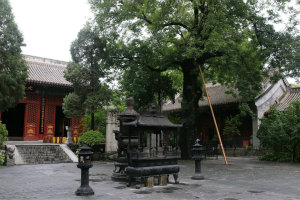
In 1437, during the period of Emperor Zhengtong (1436-1449) in the Ming Dynasty (1368-1644), a monk called Xiangrong raised money to repair the temple and changed its name to the Chongfu Temple.
In 1734, the 12th year of the reign of Emperor Yongzheng (1722-1735) of the Qing Dynasty (1636-1912), the temple got great repairs and then formally named Fayuan Temple.
After the founding of the People's Republic of China in 1949, the government invested a huge amount of money several times in the protection and maintenance of this time-honored temple.
In 1956, the Buddhist Academy of China was set up here.
In 1963, the Buddhist Conference was also held here and the members were from 11 Asian countries and regions, which exerted a big influence on its Buddhist culture popularization and enrichment.
In 1980, the Buddhist Library and Museum of China was established, making it one of the centers of Buddhist culture and studies.
In 2000, Li Ao, a famous Chinese writer from Taiwan province, published a novel, Beijing Fayuan Temple in Chinese (its English version named Martyrs' Shrine: The Story of the Reform Movement of 1898 in China), which talks about the starting and the failure in light of the Hundred Day’s Reform that took place during the late Qing Dynasty.
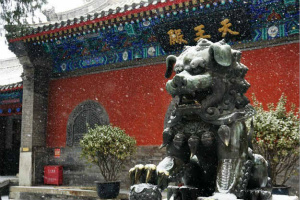
When entering the first courtyard, there stand several monuments in front of the Hall of the Heavenly King. Inside of the hall, it enshrines the Buddha Maitreya made in the Ming Dynasty. Owning a 1.12-meter height, the Buddha is bare-chested with a joyful but witty smile. Wei Tuo (Skanda), the powerful and majestic Guardian of Buddhism, 1.7 meters high, sits behind the Buddha Maitreya. What’s more, the very famous and precious bronze statues of the Four Heavenly Kings stand right by the Buddha Maitreya, each of which is 1.2 meters high.
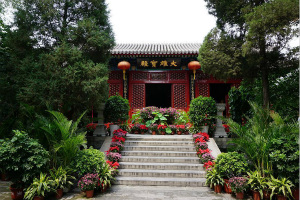
The Hall of the Great Buddha is regarded as the first and foremost architecture in the second courtyard of this temple. There are three statues, which were built in the Ming Dynasty, namely the Great Buddha (Vairocana), the Buddha Manjusri, and the Buddha Samantabhadra, and the latter two Buddhas are known to people for wisdom and universal virtue respectively. The other two statues, with a height of 2.14 meters, stand on both sides with the Great Buddha statue at the core. The exquisite and dignified sculpture craftsmanship takes an excellent place among the statues of the same period at that time.
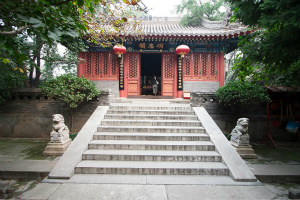
What leaps to the eyes in the third courtyard is the structure modeled after the Wanchun Hall in the Imperial Garden of the Forbidden City (the Imperial Palace). The external wall is supported by 12 pillars, with the interior appearance being the same, which forms such a unique structure. The historical stone carvings and sutras of the temple are preserved here, among which the Tang Dynasty’s Record of Buddhist Relics is one of the most valuable sutras.
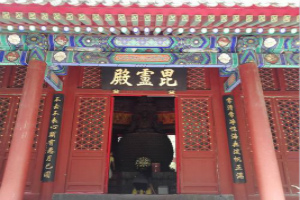
In the fourth courtyard, the main building comes to the Pilu Hall (also known as Jingye Hall). In front of the hall stands a huge stone bowl with a double-layer stone pedestal, and it is virtually the wine bowl from the royal class. Around the bowl body, wave-like patterns and images such as mountains, rivers, Chinese dragons, seahorses, and some plants are carved. They are highly skilled and delicate.
In the Pilu Hall, a Ming Dynasty bronze Pilu Buddha statue is worshiped by people. Besides, the Pilu Buddha, with a height of 4.58 meters, can touch the hall roof and the whole Buddha statue is made up of three layers. Respectively, the top layer is the solemn Pilu statue, the middle one points to the Buddha facing four directions: east, west, south, and north, and the lower one is a giant pedestal of thousands of lotus petals dotted with a small Buddha statue on each of the petal. Such a wonderful structure develops a sight that a thousand Buddhas surround the Pilu Buddha, miraculous and awe-inspiring.
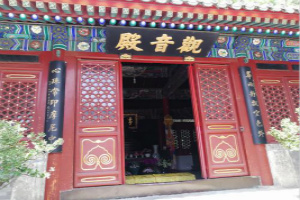
Located at the fifth courtyard, the Guanyin Hall is dedicated to different forms of Guanyin statues (the Bodhisattva of Mercy) for exhibition, a total of seven. There are various rare Buddhist texts from the Tang Dynasty to the Qing Dynasty on display written in kinds of languages. Beyond that, the Guanyin Hall embraces a stele written by Emperor Kangxi (1654-1722) of the Qing Dynasty, hanging below the hall crossbeam. Two Chinese characters “存诚” (pronunciation in Chinese: cún chéng) with the meaning of being sincere, can be seen on the stele.
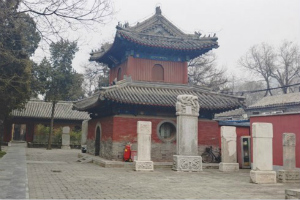
A double-story building is seated at the sixth courtyard. The Pavilion of Buddhist Sutras is paved with gray bricks and houses an enormous Ming Dynasty wooden statue of a lying Buddha and various precious scriptures. The Buddha is made of wood material painted with dry lacquer, demonstrating the best sculpture art in the Ming Dynasty. In May 1980, when the statue of Japan's national treasure, Master Jianzhen, was consecrated here for seven days, which appealed to 160,000 followers and the public to come to pay homage.
Xie Bingde (谢枋得, 1226-1289), a famous and patriotic poet of the Southern Song Dynasty (1127-1279), was unwilling to serve the Yuan Dynasty (1271-1368). He was placed under house arrest by the imperial court in the Minzhong Temple (Today’s Fayuan Temple). He went on a hunger strike and died five days later.
The huge stone bowl in the Pilu Hall, made during the reign of Kublai Khan (1215-1294) in the Yuan Dynasty, was initially for rewarding his soldiers and ministers. It was called the Dushan Jade Bowl after finishing, sitting in the Guanghan Hall of Wansui Mountain situated in the Qionghua Islet.
Many years later, the Dushan Jade Bowl and its pedestal were taken to the Zhenwu Taoist Temple due to the collapse of the Guanghan Hall. Afterward, when Emperor Qianlong of the Qing Dynasty sent some persons to the temple, he found the bowl and considered it to be a national treasure. The bowl also obtained renovation and relocation in the Chengguang Hall of the North Sea (the name of a palace in ancient China). The pedestal of the bowl remained in the Fayuan temple yet.
In the same way following the model of the Jade Bowl, Qianlong Emperor ordered people to carve a stone bowl to put it on the former pedestal of the jade bowl. At present, the Stone Bowl made during the period of Emperor Qianlong is just the one in the Fayuan temple.
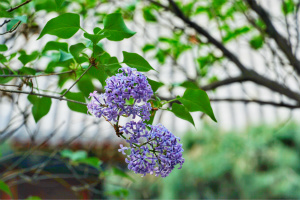
During the Ming and Qing Dynasties, the temple was famed for its flowers such as Chinese flowering crabapple and lilacs, which caught many people’s eyes. Besides, the renowned Xuan’nan Poetry Society of the Qing Dynasty came here to appreciate the flowers. Later, reputed poets such as Lin Zexu, Ji Xiaolan, and Gong Zizhen have left footprints and poems here.
More importantly, modern poet Hsu Chih-mo accompanied the Indian eminent poet Rabindranath Tagore to enjoy the lilacs in the temple. After that, the lilacs in the temple are much more famous at home and abroad. Undoubtedly, the beautiful lilacs in the temple are indeed filled with sweet fragrance, adding brilliance to the temple’s present splendor.
Enter from the temple gate → Bell and Drum Towers → the Hall of the Heavenly King → the Hall of the Great Buddha → the Hall to Mourn the Loyal → the Pilu Hall → the Guanyin Hall → the Pavilion of Buddhist Sutras
Take bus 10 and get off at the Huimin Hospital Station.
Take bus 6, or 109 and get off at the Jiaozi Hutong Station.
Take Metro Line 4 and get off at the Caishikou Station, and exit D.
Chinese: 请带我去法源寺。English: Please take me to the Fayuan Temple.
If you go to the Fayuan Temple from the center of Beijing (Grand Hyatt Beijing), it takes about 25 minutes (about 30 yuan).
If you go to the Fayuan Temple from Beijing Capital International Airport, it takes about 1 hour (about 130 yuan).
If you go to the Fayuan Temple from Beijing Daxing International Airport, it takes about 1 hour (about 160 yuan).
If you go to the Fayuan Temple from Beijing West Train Station, it takes about 15 minutes (about 25 yuan).
